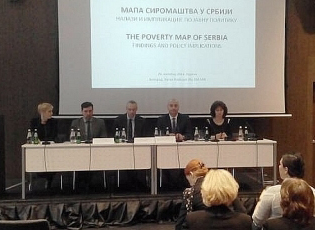- 2024
- June (1)
- 2021
- December (1)
- March (87)
- February (60)
- January (35)
- 2020
- December (109)
- November (111)
- October (109)
- September (114)
- August (22)
- July (129)
- June (116)
- May (93)
- April (106)
- March (114)
- February (53)
- January (31)
- 2019
- December (37)
- November (72)
- October (52)
- September (43)
- August (65)
- July (55)
- June (14)
- May (55)
- April (72)
- March (28)
- February (1)
- January (12)
- 2018
- December (49)
- November (45)
- October (44)
- September (31)
- August (61)
- July (46)
- June (48)
- May (33)
- April (61)
- March (53)
- February (45)
- January (50)
- 2017
- December (46)
- November (56)
- October (60)
- September (20)
- August (56)
- July (61)
- June (58)
- May (28)
- April (44)
- March (57)
- February (54)
- January (42)
- 2016
- December (55)
- November (70)
- October (73)
- September (24)
- August (50)
- July (47)
- June (61)
- May (19)
- April (48)
- March (47)
- February (33)
- January (45)
- 2015
- December (43)
- November (39)
- October (53)
- September (55)
- August (19)
- July (47)
- June (28)
- May (26)
- April (54)
- March (55)
- February (29)
- January (30)
- 2014
- December (26)
- November (48)
- October (44)
- September (30)
- August (28)
- July (30)
- June (23)
- May (53)
- April (30)
- March (25)
- February (31)
- January (16)
- 2013
- December (23)
- November (29)
- October (34)
- September (12)
- August (15)
- July (23)
- June (12)
- May (24)
- April (12)
- March (14)
- February (22)
- January (15)
- 2012
- December (16)
- November (30)
- October (28)
- September (4)
- August (14)
- July (15)
- June (3)
- May (5)
- April (7)
- March (14)
- February (8)
- January (9)
- 2011
- December (8)
- November (17)
- October (17)
- September (16)
- August (11)
- July (14)
- June (8)
- May (16)
- April (12)
- March (20)
- February (11)
- January (7)
- 2010
- December (3)
- November (8)
- October (18)
- September (19)
- August (12)
- July (16)
- June (21)
- May (15)
- April (12)
- March (15)
- February (22)
- January (11)
- 2009
- December (13)
- November (16)
- October (10)
- September (12)
- August (5)
- July (15)
- June (15)
- May (9)
- April (15)
- March (6)
- February (14)
- January (6)
- 2008
- December (9)
- November (5)
- October (2)
- September (2)
- August (1)
- July (1)
- June (1)
- April (4)
- February (1)
- January (3)
- 2007
- December (1)
- November (2)
- October (6)
GOVERNMENT PUTS EFFORTS INTO REDUCING POVERTY AND INEQUALITY

Belgrade – At the presentation of the World Bank’s publication "The Map of Poverty in Serbia", which was done on the basis of the 2011 census and the survey on income and living conditions, the results of which were presented at "The Map of Poverty in Serbia" conference in Belgrade, the State Secretary of the Ministry for Labor, Employment, Veteran and Social Affairs of the Government of the Republic of Serbia Nenad Ivanisevic said that rural areas inhabited by Serbs and ethnic minorities were mostly affected by poverty.
State Secretary Ivanisevic said that the map of poverty in Serbia showed that the poverty rate was the highest in Tutin, where two thirds of the population were poor, or 66.1 percent of it, and that those living in southeast Serbia suffered the greatest misery, where more than half of the population lived in poverty - 63.6 per cent of the population in Presevo, 63.4 per cent in Bojnik, 54.6 per cent in Bujanovac and Lebane , followed by Babusnica, Bosilegrad, Vladicin Han, Gadzin Han, Doljevac, Zitoradja, Medvedja, Trgoviste and Crna Trava. He also said that people lived the best in the Belgrade region, or in the Belgrade borough of New Belgrade, where the poverty rate was 4.8 per cent.
He pointed out that the regulation of the Government of the Republic of Serbia on special-purpose financial transfers was aimed at reducing the poverty gap between Belgrade and other municipalities in Serbia, particularly the southern ones.
“The earmarked funds amounting to over 500 million dinars, the amount of which will be larger next year, will be directly placed in in the development of social welfare services in the less developed and underdeveloped municipalities, " State Secretary Ivanisevic said.
He also said that those funds were spent on special purposes, as well as that social welfare services, such as in-home care and personal assistants, were established in many local self-governments.
On that occasion, Tony Verheijen, the World Bank Country Manager for Serbia, said that the topic of the aforementioned publication was precisely what the World Bank dealt with – reduction of poverty and enhancement of economic growth by identifying those at the highest risk of poverty, the places where they lived and the reasons why those regions were more prone to poverty than others.
Source: “Danas” daily, N1 Info, “Blic” daily, Jugpress and Coordination Body